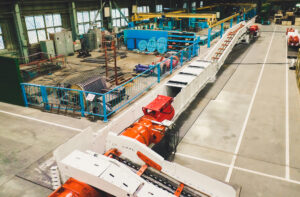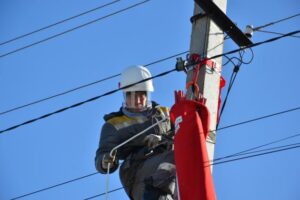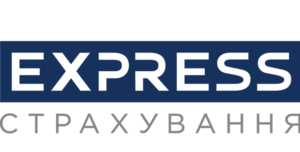
Registrations of new commercial vehicles (trucks and special vehicles) in November 2024 increased by almost 6% compared to the same month in 2023 – up to 1089 thousand units, Ukravtoprom reported in its telegram channel.
According to the association, compared to October of this year, the demand for such cars increased slightly by 1% (or 7 cars).
The Renault brand confidently holds the market leadership with 233 units, while Citroen retained the second place with 143 cars registered. Mercedes-Benz moved to third place (from fourth in October) (100 units), followed by MAN (89 units) and Scania (59 units).
As reported, in November 2023, the top five leaders in the new commercial vehicle market were Renault (241 units), Peugeot (74 units), Ford (72 units), Mercedes-Benz (71 units) and MAN (67 units), and the overall market more than doubled to 1031 units compared to November 2022.
According to Ukravtoprom, in January-November of this year, more than 11.5 thousand new vehicles were added to the Ukrainian fleet of trucks and special vehicles, which is 14% more than in the same period in 2023.
As reported, in 2023, according to Ukravtoprom, registrations of new commercial vehicles in Ukraine increased by 65% compared to 2022 – up to 11.3 thousand units.

“Corum Druzhkovka Machine-Building Plant (Corum DrMZ), a part of Corum Group (DTEK Energy), plans to complete the delivery of the last batch of steel structures under a large order from DTEK Energy for the production of equipment for concentration plants in February 2025, the plant said on Facebook.
“In April-2024, the machine builders mastered the production of tanks, in June they added reloading devices, and in July the plant began working on the production of more than 500 units of metal structures of almost 100 varieties,” the statement said.
“Corum DrMZ clarifies that the largest parts in the order are 20 meters long and 2.2 meters wide, and their weight exceeds 4 tons. More than 400 tons of metal have already been used for manufacturing.
“There are high requirements for production, in particular in terms of welding seams and painting,” the plant notes.
“Corum DrMZ, which was relocated to Dnipro in 2022, according to the plant, produced 430 units of mining equipment in January-November this year, as well as more than 850 thousand units of components and spare parts.
In particular, in November, the company produced 5 units of shearers, more than 81 thousand components and spare parts, and repaired a KPD shearer. The products include trolleys, skip, cage, main ventilation fan, universal wheelsets, anchors, fire pipes and high-pressure hoses.
Corum Group is a leading mining equipment manufacturer in Ukraine. It is a part of DTEK Energy, an operating company responsible for coal mining and coal-fired power generation within Rinat Akhmetov’s DTEK energy holding.

In November, amid intensified hostile attacks on the country’s energy infrastructure, DTEK Grids’ distribution system operators managed to restore electricity to almost 1 million Ukrainian families whose homes were cut off due to shelling in Odesa, Dnipro, Donetsk and Kyiv regions.
“The enemy intensified shelling of the country’s energy infrastructure in November. Lines and equipment were destroyed by missiles or drones. Most of all, in Odesa region, which suffered devastating attacks,” the company said in a press release on Monday.
Last month, power engineers managed to restore electricity to the homes of 701.7 thousand families in Odesa region.
Over the same period, DTEK Grids restored electricity to 4.8 thousand families in Kyiv region whose homes were cut off as a result of another hostile attack. In November, enemy shelling also damaged power grids and equipment in the capital, and power engineers promptly restored power to 1.1 thousand homes of de-energized families.
“In the regions close to the hostilities, the power system also suffered from enemy artillery shelling and air strikes. In the last month of autumn, the enemy continued to attack Dnipropetrovska oblast, especially the south of the region,” the press release explains.
Over the past month, power engineers in Dnipropetrovs’k region have managed to restore electricity supply to 192.1 thousand families.
In Donetsk Oblast, which remains the scene of the most intense fighting, power engineers managed to restore electricity to 75.5 thousand households in November. The company’s specialists continue to restore power grids in the frontline region every day, as soon as the security situation and the military allow.
“Since the beginning of the full-scale war, we have already restored electricity to 16.1 million families in Kyiv, Odesa, Dnipro, Donetsk and the capital,” said Alina Bondarenko, CEO of DTEK Grids.
“DTEK Grids develops the electricity distribution and grid operation business in Kyiv, Kyiv, Dnipro, Donetsk and Odesa regions. The company’s DSOs serve 5.5 million households and 158 thousand enterprises.
Estimated number of population in regions of Ukraine based on number of active mobile sim cards (mln)

Open4Business.com.ua

Delta-Lotsman branch of the state enterprise Administration of Sea Ports of Ukraine announced a tender for voluntary insurance of employees against accidents on December 3, according to the electronic public procurement system Prozorro. As reported, the expected cost of services is UAH 4.333 million. Tender offers are accepted until December 11.
SE “Delta-Lotsman” was established by order of the Ministry of Transport of Ukraine in 1998 in order to improve the conditions for ensuring safety of navigation, protection of human life at sea and the environment, in the territorial sea of Ukraine in accordance with the requirements of international agreements and conventions, as well as to streamline the structure of marine pilot services in the north-western part of the Black Sea.

IC “Express Insurance” (Kiev) in January-October 2024 collected insurance premiums in the amount of UAH 759,1 mln, which is by 31,3% more than the same period of 2023.
According to the insurer’s website, twice as many contracts were concluded during this period.
Premiums on CASCO amounted to UAH 593,8 mln (+18,6% to 10 months-2023), on MTPL -145 mln UAH (2,3 times more), VHI -9,8 mln UAH (+9,1%). On other types of insurance UAH 20,3 mln (+36,8%).
The company also reports that in October 2024 attracted UAH 82.7 mln of premiums, which is 20.2% more than in October last year. Including premiums on CASCO amounted to UAH 63,1 mln (+8,6%), on MTPL – UAH 17,5 mln (+95,5%).
As reported, IC “Express Insurance” in January-October 2024 made payments in the amount of UAH 427,2 mln, which is by 57,5%, or by UAH 155,9 mln more than in the same period of 2023.
Including payments under CASCO amounted to UAH 357.5 mln (+51.1%), under CMTPL insurance – UAH 58.5 mln (2.3 times more), payments under other insurance contracts – UAH 11.2 mln (+16.7%).
At the same time, the company reports that in October-2024 payments to clients amounted to UAH 48 mln (+33.7%) more than in October-2023. In particular, the company paid UAH 38.4mn (+22.4%) under hull insurance contracts, and UAH 8.7mn (+2.5 times) under CMTPL insurance contracts.
Express Insurance was founded in 2008 and is a part of UkrAVTO group of companies. The company specializes in automobile insurance. Stable high speed of events settlement in IC is provided by optimal interaction with partner service stations.
Since April, 2012 IC Express Insurance has been an associated member of the Motor Transport Insurance Bureau of Ukraine.